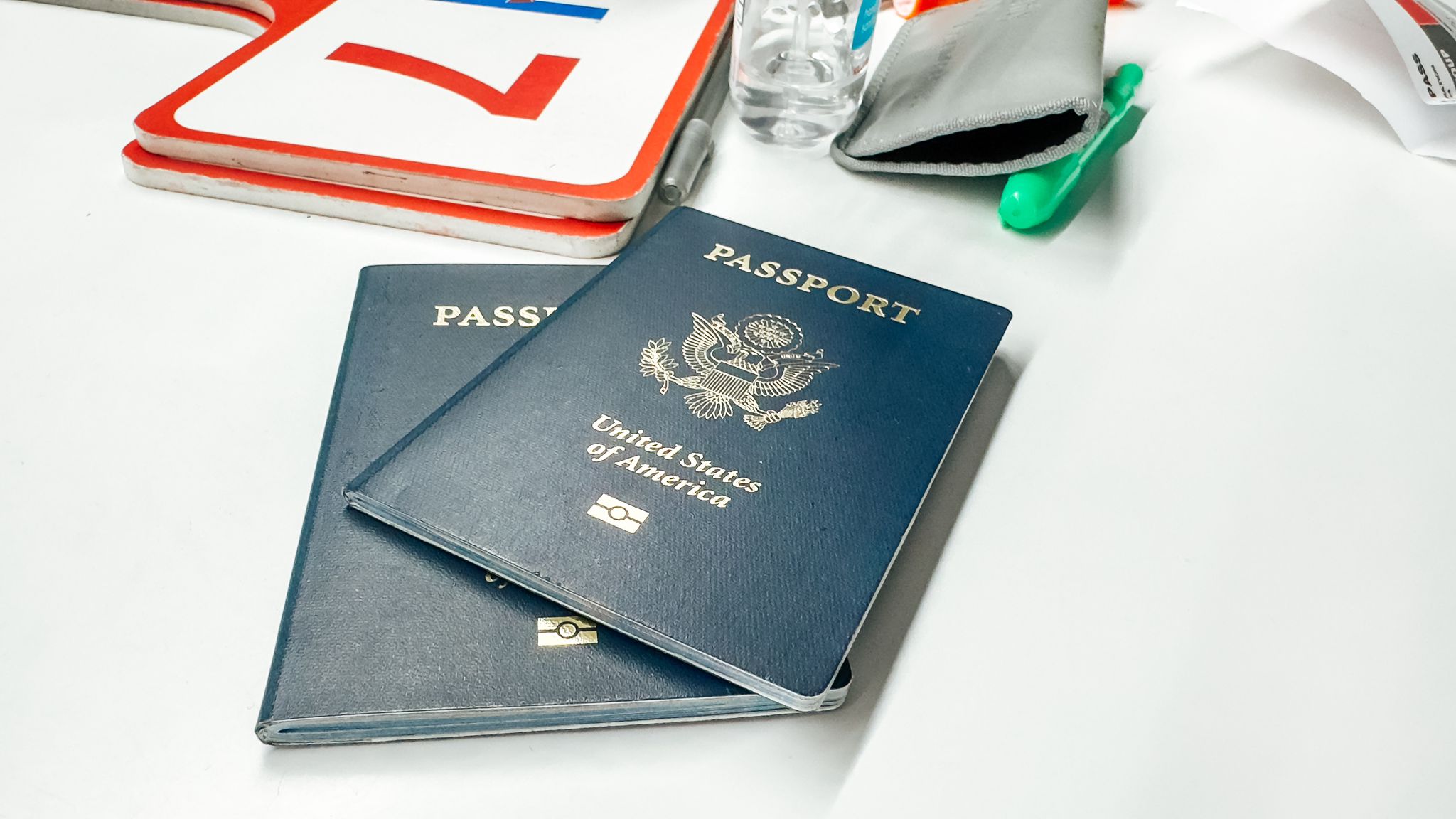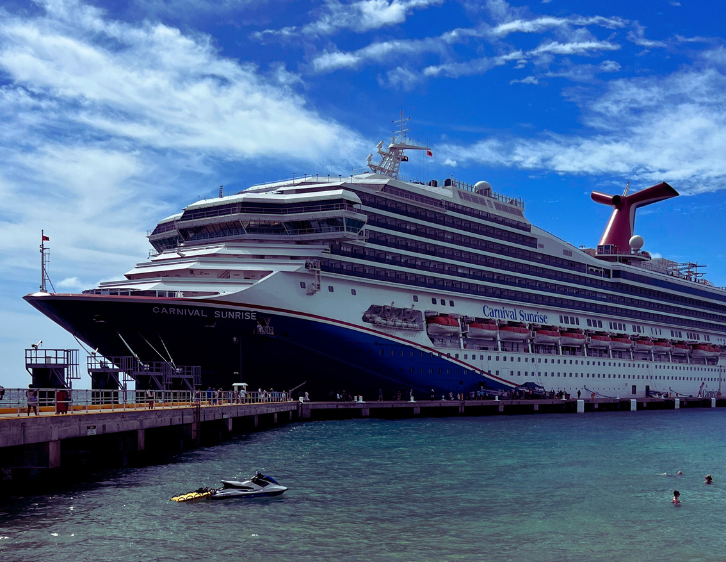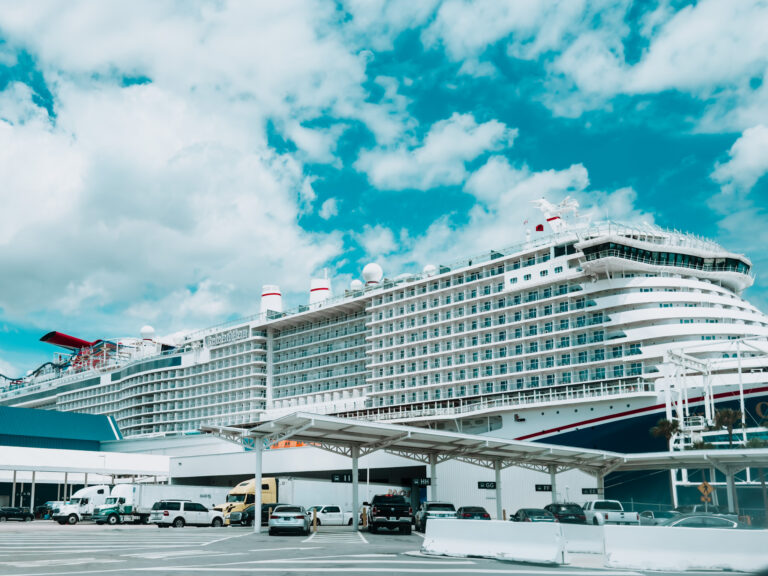Passports and Cruising: Everything You Need to Know

Almost daily, from friends who are embarking on their first cruise, or on the cruise travel groups on social media, I see the same question asked… “Do I need a passport to cruise?” The short answer? “No”… but under certain conditions. The long answer? “No”… but you should. And I’ll tell you why a little bit further below.
What Cruise Lines Require and Why
If you are embarking on a closed-loop sailing (more on that below), most cruise lines only require an original birth certificate in combination with a valid government-issued ID. So you need either this certificate/ID combo, OR a valid passport that does not expire within the next six months (also, more on that below). For children, just the birth certificate or passport is necessary.
These documents verify the identity of all passengers cruising for a safe onboard environment—especially given the need for cross-border security, as many cruise itineraries involve travel to multiple countries with different laws and requirements.
Closed-Loop vs. Open-Loop Itineraries
To determine if you need a passport to cruise or if the birth certificate/ID combo is sufficient, it’s important to know the difference between closed-loop and open-loop routes. This difference decides whether you’ll need a passport or not.
Closed-Loop
Closed-loop itineraries, or round-trip cruises, refer to journeys that begin and end at the same port of embarkation. U.S. citizens sailing a closed-loop itinerary that originates and ends in the United States and starts and ends from the same port generally do not need a passport, even if that sailing stops at international destinations.
And that’s just one of the amazing perks of cruising—you can often travel internationally without a passport! How cool is that?!
While this is the general rule, it’s essential to consult with the cruise line and your travel documents provided by the line to confirm the identification requirements. Virgin Voyages, for instance, at one point required passports of all passengers, regardless of whether it was a closed-loop sailing or not, although they have since loosened this requirement.

Open-Loop Required Passport to Cruise
Open-loop itineraries, or one-way or open-jaw cruises, involve journeys that begin and end at different embarkation ports. These itineraries often include international ports of call, requiring passengers to cross international borders during their voyage.
Examples of open-loop itineraries include transatlantic cruises between Europe and North America or cruises that sail between the United States and South America. Another is the popular Panama Canal route, which is often offered with Fort Lauderdale as the originating port, but cruisers disembark on the west coast.
A valid passport is typically required for international travel on open-loop cruises. Regardless of citizenship, most countries mandate the use of passports for entry and exit, making it essential for passengers to possess this vital travel document.
Additionally, certain countries may impose visa requirements or other entry restrictions, although these are usually pretty easy to get and just require a bit of advance work, which is usually submitting an online form and paying a nominal fee. If this is the case for your selected cruise itinerary, the cruise lines generally do a good job of communicating this with their customers before sailing.
It’s important to consult your travel documents provided by the cruise line, as they will often specify things like required visas. These are generally simple to get online and involve filling out an online form and paying a modest fee, but they require some effort before sailing.
The Six-Month Rule
When traveling with a passport, cruisers must verify that they are in compliance with the “Six-Month Passport Validity Rule,” which states that their passports are valid for six months beyond their intended date of visit.
Even if your passport is valid during your cruise and doesn’t expire until right after you return home, it may be considered invalid if it expires in less than six months. This rule isn’t universally known, and the cruise lines may not always flag this for passengers, so be sure to check your dates carefully to avoid unexpected surprises.
Why You Should Cruise with a Passport
(Even if You Don’t NEED One)
In summary, US travelers on a closed-loop itinerary generally do not need a passport to cruise. For these itineraries, detailed above, most cruise lines require just an original birth certificate in combination with a valid government-issued ID for adults, and a birth certificate for minors.
While a passport to cruise is often not required, however, it’s advisable to have one. Why? As it’s unlikely to happen, you may encounter a medical emergency that requires treatment at a foreign port of call, and hospitalization might mean that you aren’t well enough to get back on the ship or you can’t get back in time before it departs and you require medical transport via other means to the United States. In this case, you will need a passport for international travel from the foreign port of call back to the States.
A more likely scenario, which, unfortunately, I have seen on several of my sailings, is that you lose track of time at port and don’t return in time, and the ship takes off without you on board. When this happens, it’s almost always the cruiser’s responsibility to get him or herself either back home or to the next port of call to meet back up with the ship. In this case, you will also need a passport to take a flight.
Should I Bring My Passport With Me to Port?
Many cruisers wonder whether or not to bring their passports to shore on port days. This topic is widely misunderstood, even among seasoned cruisers, and often generates a robust debate. And while I’ll get into the official guidance in a moment, when it comes to this question, if you’re a highly anxious person… just bring it with you.
For everyone else, though, I do not advise cruisers to bring their passports off the ship on port days. Instead, leave them in your stateroom safe and have a valid government-issued ID with you.
The exception is cruise itineraries that start and/or end outside of your home country. If you’re an American citizen taking a European cruise, for example, bring your passport with you to port (although on a recent two-week European cruise visiting seven different countries, I was not once asked for my passport upon returning to the ship on port days).
And here’s where this becomes a controversial issue. Some people freak out at the idea of being in a foreign country without their passport, which is completely understandable. And yes, if you miss the return to ship time and the ship leaves without you, the responsibility is almost always the sole responsibility of the individual cruiser to find their own way home, and doing that will require a passport.
So why would I leave my passport back on the ship?
Well, acccording to John Heald, who is Carnival Cruise Line‘s brand ambassador, this line’s policy for handling passports in the case of a passenger missing the ship’s departure is this (sic): “In case of an emergency which meant you could not return to the ship we do indeed have a policy in place. Your passport would be collected from the guest cabin (including retrieving it from the safe) and by our housekeeping officers, a Guest Services officer and someone from our security team. We would then return the passport to the ships agent. We have one in every single Port who takes care of the ships needs during the time there. The agent would return the original passport to you.”
Yep, you read that right. Before the cruise ship sets sail on port days, the cruise line checks the manifest to see if all passengers are on board and accounted for. If anyone is missing, the crew will try to reach any missing passengers, including calling their names with a ship-wide announcement. Why? Sometimes, “missing passengers” aren’t missing at all. They’re on board, but an error or glitch occurred when the security team scanned them back in upon embarkation.
So when you repeatedly hear the same passenger names called over the PA system on port days close to the return to ship time, that’s why.
Now, what if passengers really are missing? Unless they’re on a cruise-sponsored excursion, in which case the cruise line guarantees that the passenger won’t be left behind if they miss the ship. If the cruise line crew is unable to find the passenger, at this point, they will dispatch a member of security to the passenger’s stateroom to check that person’s safe to see if their passport is located inside.
If it is, they hand it off to the port agent. Port agents are people on land at each cruise port destination who serve as liaisons between the ship and shore, coordinating services for the ship and crew.
I have great time management skills, so I know that my personal risk of losing my passport on port days (or having it stolen) is far greater than me ever even coming close to missing the return-to-ship time. So, I personally feel much more comfortable leaving my passport behind in my stateroom safe.
Plus, because of the cruise line procedures, I know that if I miss the return time and get left behind, I can retrieve my passport from the port agent and then use it to fly back home. That’s why it’s important to not just leave the passport behind in the stateroom but to specifically leave it in the stateroom safe, which is always good practice anyway to ensure it stays safe and secure.
But… do what feels best for you. If you want to keep your passport with you at all times, nothing is stopping you!
Will the Cruise Ship Wait For Me if I Run Late?
As noted, the ship generally will not wait for cruisers who miss the return-to-ship time unless that passenger purchased an excursion through the cruise line and that excursion runs late. This is a painful lesson that these eight cruisers recently learned.
So, when you’re taking a cruise and venturing out on your own during port days, returning on time is imperative. If you miss the ship, you’re on your own. For a complete rundown of the pros and cons of independent excursions and cruise line excursions, check out my post here.
I’m willing to risk doing my own thing on port days instead of taking a cruise line excursion because I enjoy the freedom, flexibility, and cheaper cost of booking excursions or simply exploring the port area on foot, with a private driver, or by taxi.
When I venture out on my own, though, I’m always very conscientious about returning to the ship at least two hours before the official “return to ship” time, and because of this personal policy, I’ve never even had a close call.






